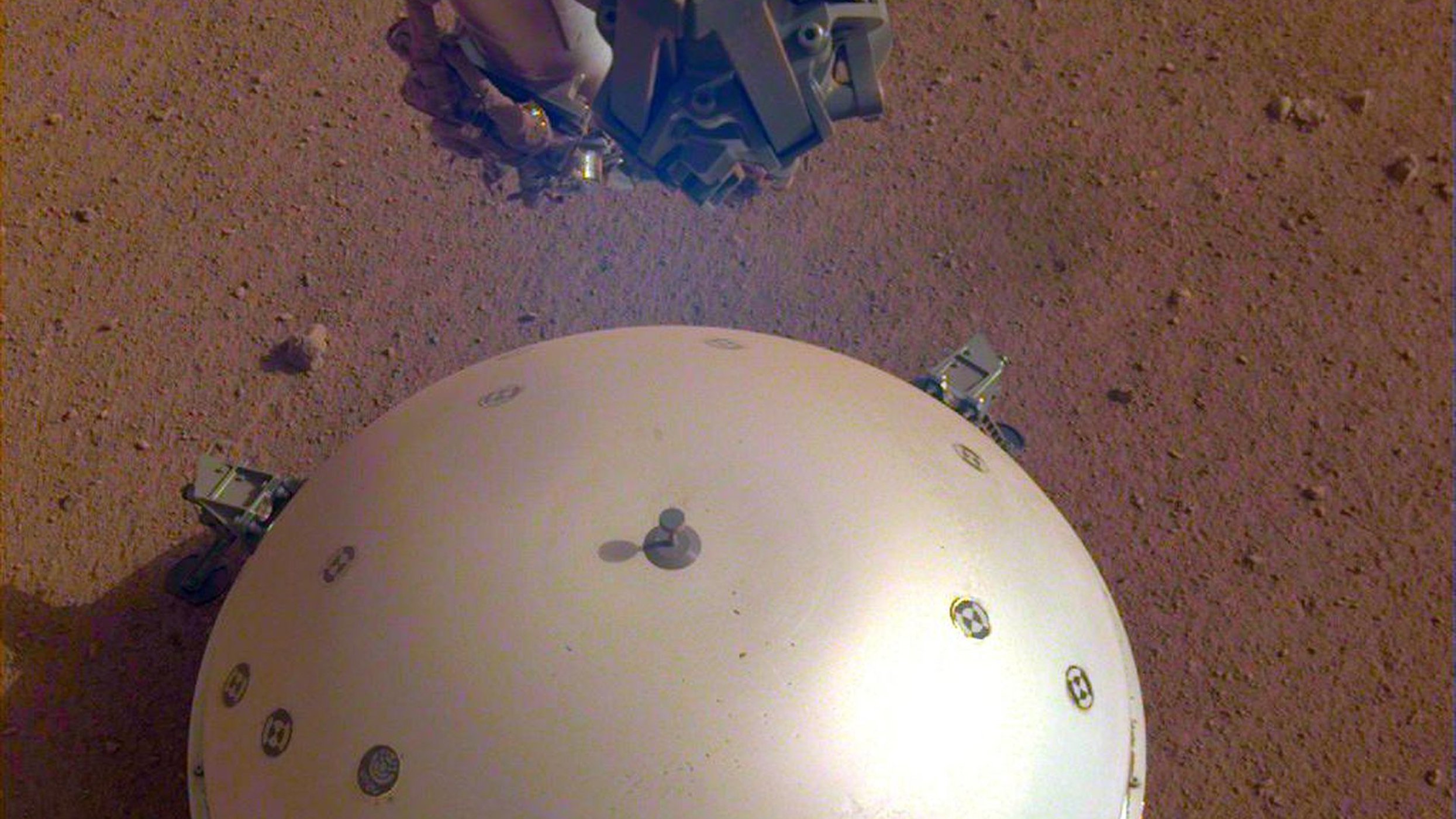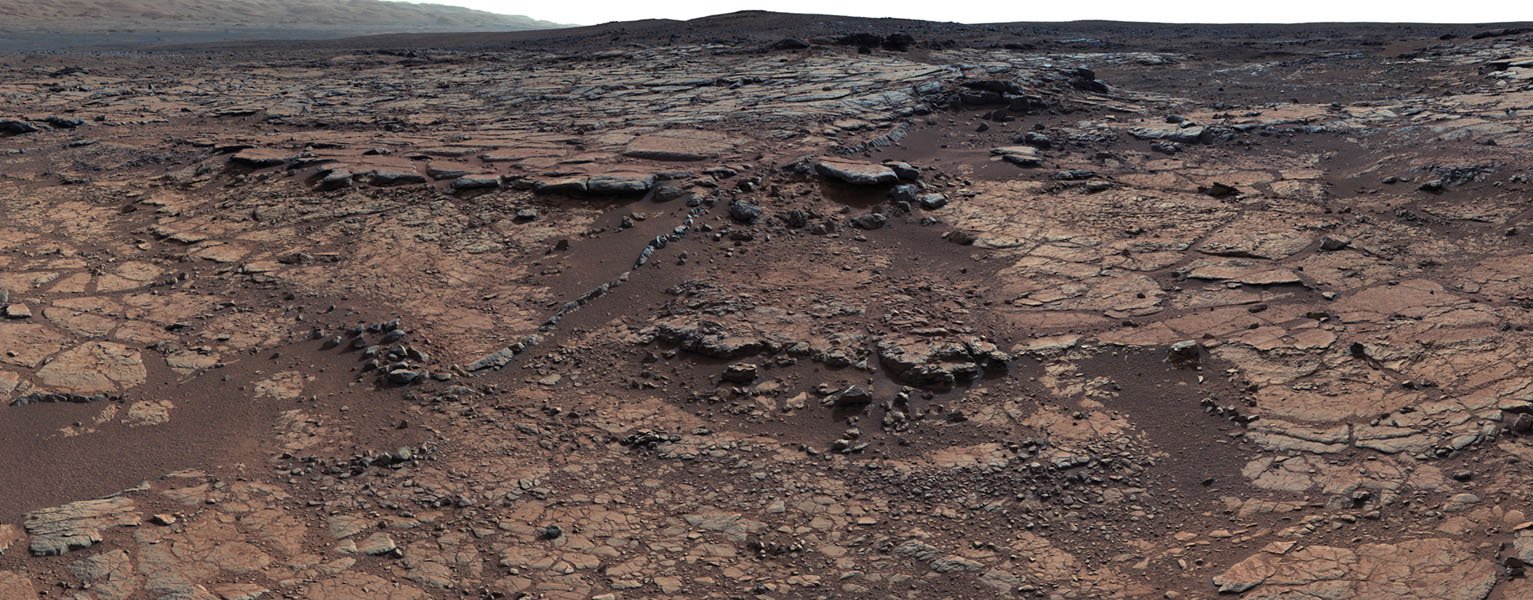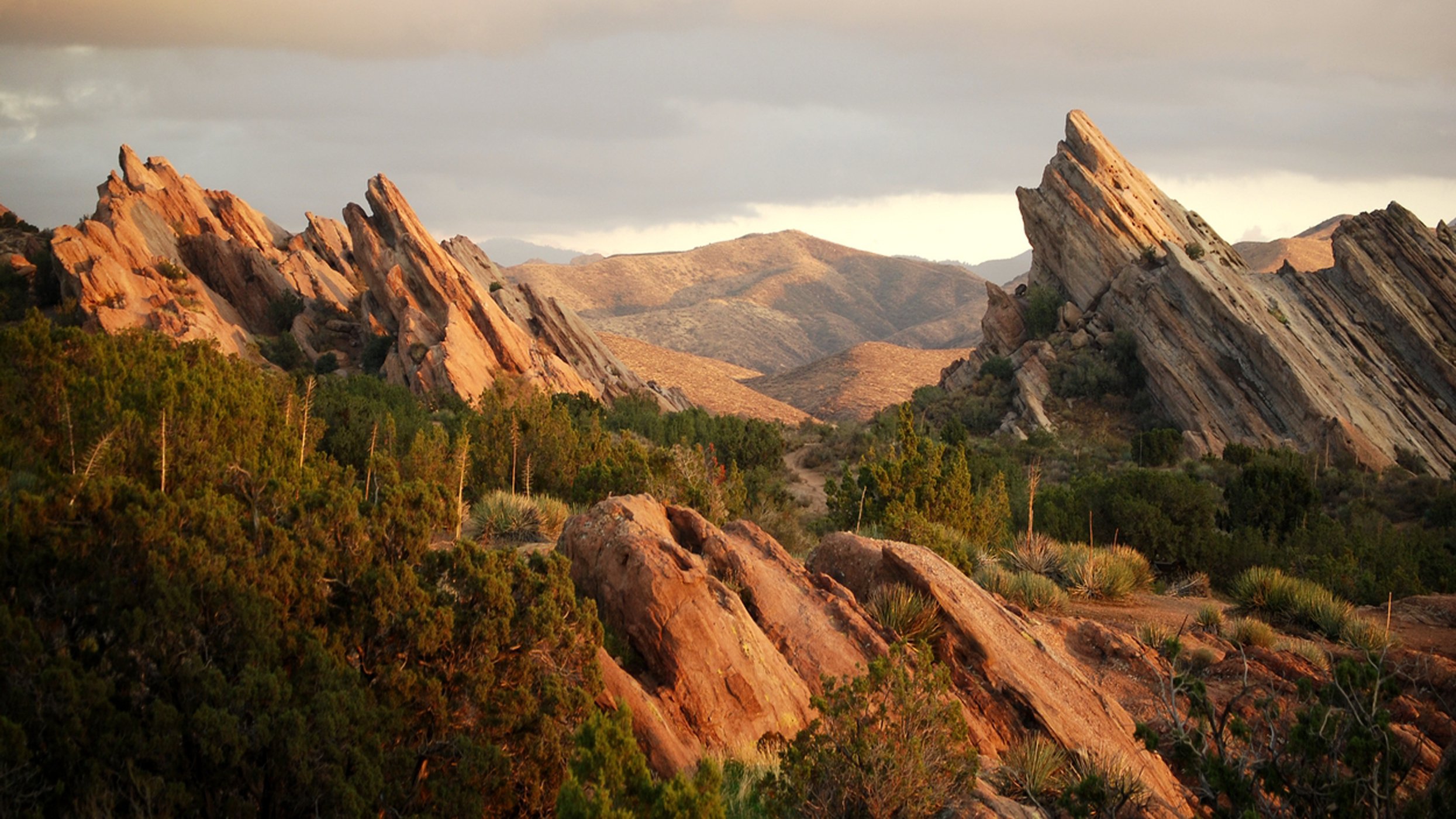NASA’s InSight detected its first ‘Marsquake.’ Have a listen
The faint rumbles, detected on April 6, could be long-awaited proof that the Red Planet is seismically active.

An image of InSight's seismometer, taken on the 110th Martian day, or sol, of the mission. Image Credit: NASA/JPL-Caltech
Earth isn’t alone: The Red Planet shakes, too.
For the first time, a tremor has been detected on Mars by NASA’s InSight lander. The seismic waves, recorded on April 6, are pretty puny, equating to a magnitude 2 or 2.5 quake here on Earth, and don’t reveal much about Mars’ interior. But even the tiniest quivers on the Red Planet are big news: They suggest that Mars, like Earth, is seismically active—and here on our home planet, scientists are already eager for an encore.
“We've been waiting months for a signal like this,” InSight team member Philippe Lognonné said in a statement. “It's so exciting to finally have proof that Mars is still seismically active.”
InSight, which launched last May, first deployed its ultra-sensitive seismometer back in December. Its monitoring phase officially began several weeks ago, shortly after the lander placed a protective dome over the instrument to shield it from buffeting winds and extreme temperature fluctuations.
Before this month, the seismometer had registered a smattering of other unrelated events, like strong winds and the movements of the lander’s robotic arm. But this bout of shaking could finally be the real deal: an actual quake generated from the Red Planet’s interior.
NASA scientists are still in the midst of sussing out the exact cause of the rumbling. Here on Earth, quakes happen when tectonic plates grind up against one another. But trembles on Mars, which lacks tectonic plates, seem to have a different origin: The planet is still gradually cooling down—and temperature changes cause its rocky crust to contract and crack, resulting in occasional quivers. Quakes can also be triggered by meteors impacting Mars’ surfaces, though, and that possibility hasn’t been ruled out.
By studying Mars’ subtle shaking, researchers hope to better understand the planet’s structure and composition. Depending on the materials they pass through, seismic waves behave differently—and gathering this kind of data could help scientists figure out how Mars and other rocky bodies in our Solar System formed.
Already, the April 6 quake has stirred a bit of intrigue. It seems the tremor occurred relatively close to the lander, and lasted for more than 10 minutes—a long time for shaking that would have been pretty much imperceptible on our own planet. Protracted rumbling could indicate that the ground beneath InSight holds little water, which muffles seismic waves, or that the makeup of its soil differs vastly from what’s here on Earth.
That’s about all researchers know so far. Unfortunately, this quake wasn’t quite strong enough reveal anything deep beneath the Red Planet’s surface. But the fact that it happened at all is encouraging—simply because it’s unlikely to be a one-off event.
Plus, there are already hints of a repeat. InSight tuned into three other sets of seismic signals on March 14, April 10, and April 11. But these other potential marsquakes, which are still unconfirmed, were even smaller and more ambiguous in origin than the April 6 tremor.
The hope is that a dozen more marsquakes will occur before the lander reaches the end of its tenure. InSight is scheduled to operate for two more (Earth) years. If its solar-powered instruments continue to behave, though, that period could lengthen. “It’s a waiting game...we just have to wait until the planet cooperates,” NASA planetary scientist Amy Weber told Julia Rosen at the Los Angeles Times.
There’s no telling what’s to come—but on this foreign, distant world, every bit of information makes a difference. “[InSight is] helping paint the picture that Mars is still an active place,” Tanya Harrison, a Mars scientist at Arizona State University, told Maya Wei-Haas and Michael Greshko at National Geographic. “We’ve just been building incrementally onto this story.”


